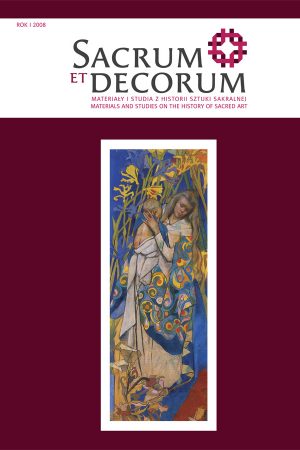Witraże I połowy XIX wieku na ziemiach polskich
Słowa kluczowe:
witraż, Polska, XIX wiek, neogotykAbstrakt
W badaniach nad sztuką ostatnich dwustu lat rozpowszechniony jest pogląd, że witraż pojawił się w Polsce na nowo dopiero po roku 1850, a zatem bez mała sto lat później niż w Europie Zachodniej, gdzie już w połowie XVIII stulecia daje się zaobserwować wzmożone zainteresowanie barwnymi przeszkleniami. Niniejszy artykuł ma na celu podważenie tej opinii i wstępne rozeznanie problematyki witrażu pierwszej połowy XIX wieku na ziemiach polskich. Bezpośredni wpływ na wzrost zainteresowania witrażem w Polsce w pierwszych dziesięcioleciach XIX wieku miała wywodząca się z Anglii moda na średniowiecze, szerząca się szczególnie w kręgach arystokracji. W tym kontekście umiejscawiać należy niezwykłą kolekcję witraży dawnych, jaką zgromadziła w Puławach Izabela z Flemingów Czartoryska, oraz barwne przeszklenia pierwszych neogotyckich wnętrz, chociażby kaplicy w pałacu biskupów krakowskich urządzonej za czasów bpa Woronicza, Domu Gotyckiego w Puławach, pałacu Ludwika Paca w Dowspudzie oraz kaplicy Anny Dunin-Wąsowiczowej w katedrze krakowskiej, gdzie zamontowano witraż sprowadzony z mediolańskiej pracowni Bertiniego i Brenty. Obrazu początków odrodzenia witrażu w Polsce w I połowie XIX wieku dopełniają techniki pseudowitrażowe i barwne przeszklenia okien, które wykonywano niekiedy w zastępstwie witraży figuralnych.
Downloads
Pobrania
Opublikowane
Jak cytować
Numer
Dział
Licencja
Prawa autorskie (c) 2008 Sacrum et Decorum

Utwór dostępny jest na licencji Creative Commons Uznanie autorstwa – Użycie niekomercyjne – Bez utworów zależnych 4.0 Międzynarodowe.
Zgodnie z polityką Open Access autorzy zachowują pełnię praw autorskich do swoich artykułów – bez ograniczeń.
Autorzy mogą deponować swoje artykuły w wybranym przez siebie repozytorium.


